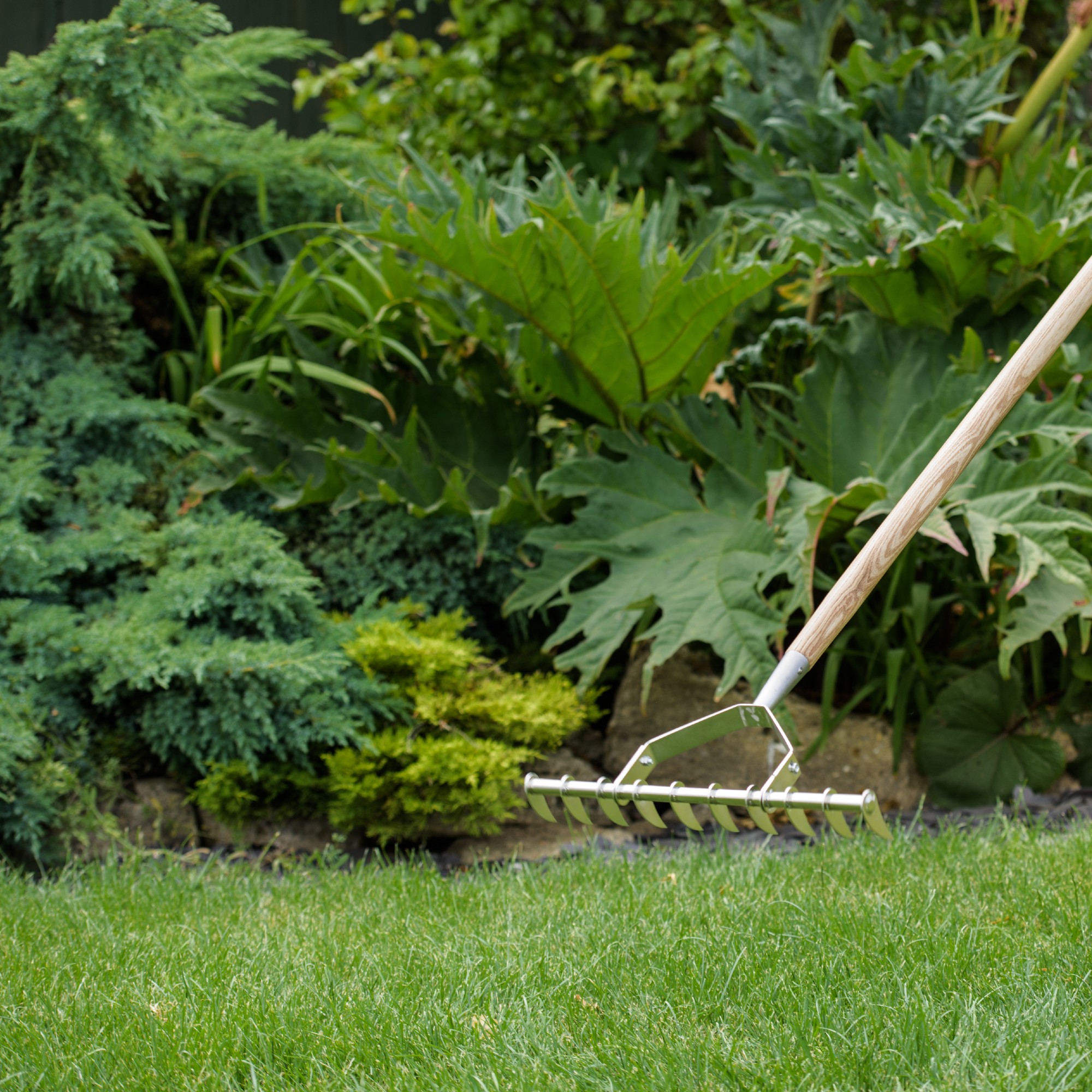
Spring, along with autumn, is the perfect time to give your lawn some much-needed TLC after going through the harsh winter months. One of the lawn care jobs that you should tackle this time of year is aerating - but if you’re wondering how to aerate a lawn and what exactly it does to your garden’s grass, then don’t worry, we’ve got you covered.
Since knowing how to do it is just as important as knowing when to aerate a lawn, our gardening experts have shared their top tips, along with an easy-to-follow step-by-step guide so there’s no room for messing up.
Trust us, it’s an easy process and anyone can do it in just a few steps. So without further ado, let’s get lawn aerating!

How to aerate a lawn
First and foremost, let’s get one thing straight – what’s aerating? And why is it important?
‘The aim is to create small holes in the soil underneath your lawn, ideally removing a plug of soil,’ says George Pitcher, brand manager at Westland, specialising in lawns. ‘Aerating your lawn at least once per year will really help improve drainage, so you don’t suffer with puddles on your grass, but additionally, it will allow oxygen, water and nutrients to reach the roots of the grass, helping to give you a strong and healthy lawn.’
Now, with that out of the way, let’s see what tools you’ll need.
What you’ll need
‘You can use a mechanical or roller aerator to tackle large areas of lawn,’ says Fiona Jenkins, gardening expert at MyJobQuote.co.uk, the UK’s leading trades matching site. ‘Or you can use spiked shoes and forked aerating tools to manually complete smaller lawns. But if you don’t fancy buying specialist tools, a normal garden fork will also work.’
These are your options:
- Gardening fork like this one at Amazon
- Electric aerator like the Einhell GC-SA 1231/1 Electric Lawn Scarifier And Aerator at Amazon
- Manual aerating machine like this one at Amazon
- Aerating shoes like these from Garden Mile at Amazon

Pick the right time
As previously mentioned, getting the timing right is crucial. Both spring and autumn are the perfect times of the year to get your lawn aerating done. But as we find ourselves in spring, it’s ideal to include this job either in your April or March lawn care.
‘A great time to aerate the lawn is in early spring as the ground is starting to slightly warm up and the grass is beginning to grow again,’ says Steve Chilton, garden expert at LeisureBench. ‘You can also aerate your lawn in early autumn, so around September time. Doing it twice a year can be beneficial. Just make sure that it isn't too hot or too dry outside, and that the grass isn't waterlogged or excessively wet. The soil should be moist.’
George adds, ‘Plan to aerate your lawn when it is moist enough, ideally the day after rainfall. If the soil is really dry, it will make it hard to penetrate. You could also water your lawn the day before to stop it being too hard.’

Aerate your lawn
So now let’s improve your lawn drainage and its overall health with aerating.
‘If you're using a garden fork, then all you have to do is use it to cover the garden in holes. The holes should be around 12cm deep, and they should be spaced around 15cm apart from each other. It's important to ensure the holes aren't just light as this won't aerate your lawn properly,’ Steve explains.
If you’re using an electric aerator, the machine does most of the work for you really, making it the easier option.
Then finish by giving your lawn a nice watering.

FAQs
Should I scarify or aerate my lawn first?
Scarifying should definitely be done before aerating to make your life easier.
‘You should scarify a lawn first as this removes the thick layer of thatch between the grass and soil. This will make the job easier and ensures the holes you create reach into the ground to improve air circulation, drainage and feeding,’ Fiona says.

Should you aerate a wet or dry lawn?
As previously mentioned, it’s best to have a bit of a middle ground between wet and dry lawn and make sure the grass is moist to ensure successful aerating.
‘To get the best results, the ground should be moist. A dry lawn will be hard to aerate if the ground is hard and if the lawn is really wet, the ground won’t be stable enough. So, the holes are likely to seal up again,’ Fiona explains.
Now, that wasn’t so hard, was it?







